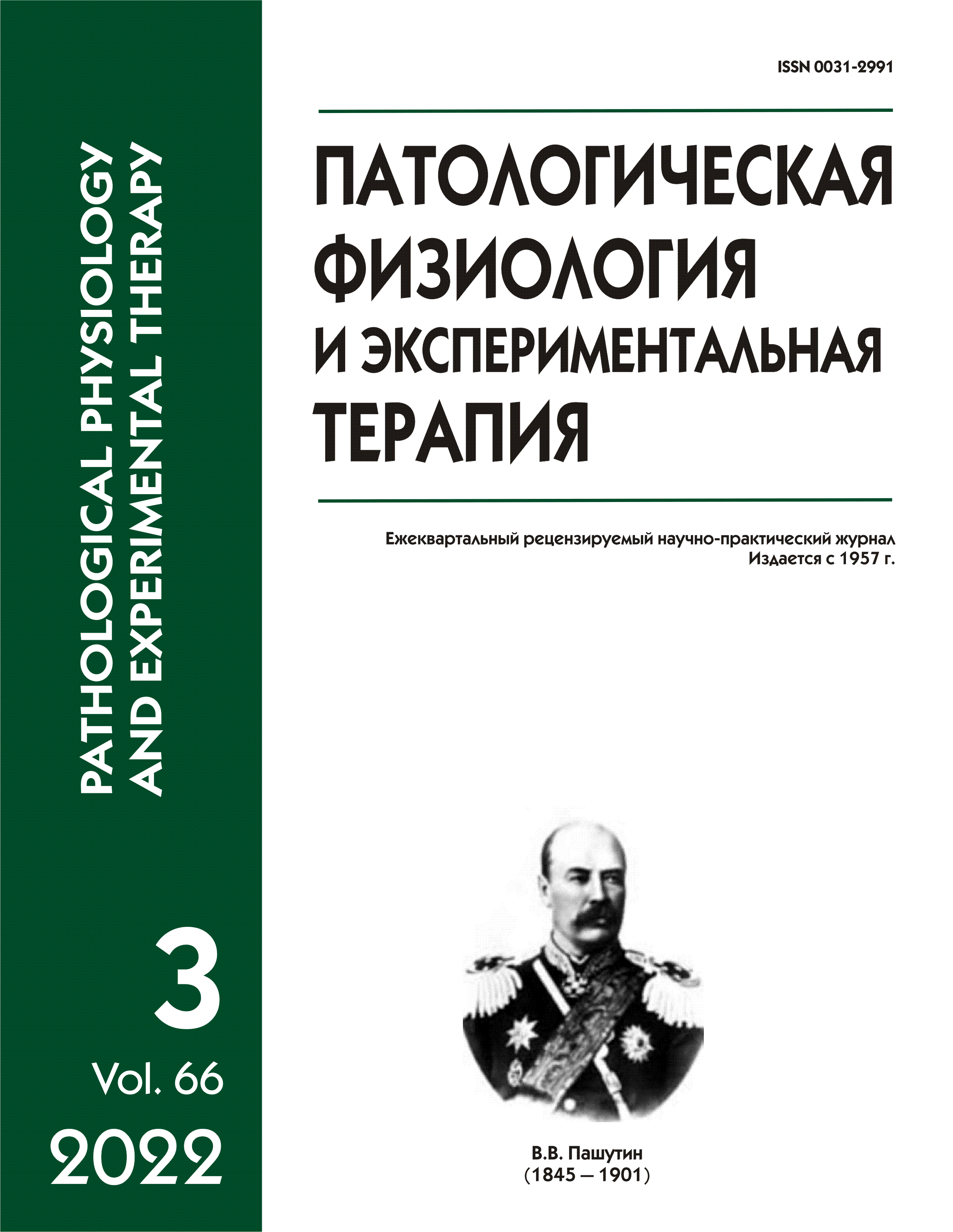Lipid peroxidation and the antioxidant system of the rat brain in adaptation to hyperoxic load
Abstract
Enhancing the effectiveness of hyperbaric therapy in the treatment of focal pathology is impossible without knowledge of the mechanisms of adaptation to therapeutic modes of hyperbaric oxygenation (HBO) of the organs and tissues not involved in the pathological process. The aim was to study the effects of single and repeated administration of HBO in the therapeutic mode on lipid peroxidation (LP) and the antioxidant system of neurons in phylogenetically different brain structures. Methods. The experiments were performed on 213 white male rats weighing 180-230 g. HBO was created with medical oxygen in a 90-liter experimental pressure chamber (18 HBO sessions at 2 ata for 50 min, daily, in the morning). The measurements were made after the 1st, 5th, 10th, and 18th HBO sessions. The LP products measured in the brainstem, cerebellum, and hemispheres included conjugated dienes (CD), ketodienes, and conjugated trienes (KD&CT), and malondialdehyde (MDA). The state of the antioxidant system was assessed by the concentrations of endogenous antioxidants, urea, uric acid (UrAc), and superoxide dismutase (SOD) and catalase activities. Results. In phylogenetically heterogeneous structures of the brain, LP showed different sensitivity both to single and multiple use of HBO. This was evident as multidirectional (stimulation, inhibition) responses of the CD and KD&CT formation, depending on the number of HBO sessions. This was also true for the formation of CD and KD&CT from neutral lipids and phospholipids in the same brain structure. As the number of HBO sessions was increased, the refractoriness of LP reactions developed. This was accompanied by normalization of the tissue concentrations of MDA, which had been increased after the 1st and 5th HBO sessions. Without changing the tissue concentrations of urea, the course of HBO stimulated the accumulation of UrAc after the 5th and 10th HBO sessions. The catalase activity decreased in the brainstem after the 5th and increased in the cerebellum and hemispheres after the 10th HBO sessions. The activity of SOD in the studied brain structures increased after the first session and remained elevated throughout the course of HBO. Conclusion. The 18-day course of HBO in a therapeutic mode does not cause persistent accumulation of LP products (CD, KD&CT, and MDA) in the rat brainstem, cerebellum and hemispheres or exhaustion of the antioxidant system. The latter is evident as the preservation of the neuronal response to HBO and the steadily increased activity of SOD while the increased activity of catalase and the accumulation of uric acid were transient.






